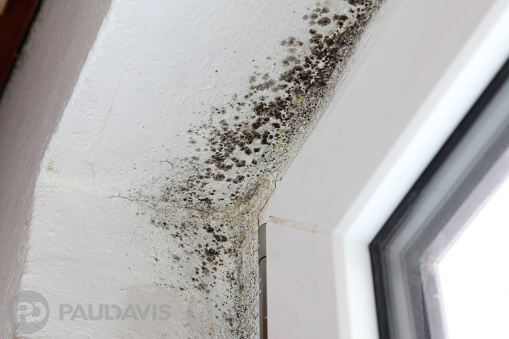
Black mould: these words provoke fear and anxiety for homeowners, but they shouldn’t. Knowing more about black mould helps you discern when you have a problem, how to battle it if necessary, and ultimately sleep well at night in a healthy home.
While black mould is less common than other mould species, it’s not rare. Many people believe black mould automatically causes big problems—but that’s not always the case. “Black moulds are from the species Stachybotrys chartarum and can usually be found growing on and consuming materials such as wood and cardboard, which are made from the cell walls of green plants,” says Leslie Anderson, Paul Davis Corporate Vice President. “These moulds aren’t themselves toxic, but can produce more mycotoxins than most other types of mould.”
Mycotoxins can produce symptoms in humans like dizziness, fatigue, hives, and even asthma, but it’s the mycotoxins causing those symptoms—not black mould itself. According to science, there’s a lot more that prompts black mould to produce mycotoxins than simply a good source of food and a dark, damp space. So if you suspect black mould in your home or building, there’s no reason to panic, thinking that what you see is sure to make you and your family ill.
Patches of this pungent, black, downy growth do need to be removed, however, by qualified cleanup services like Paul Davis. Any mould, even blue/green species like penicillium, is unsightly. Further, moulds can cause familiar allergy-like symptoms such as runny nose, itchy eyes, and respiratory troubles that many experience from irritants like pollen. Trained technicians can assess the danger of the mould and use specific processes to remove it safely and prevent its return. Because these fungi easily thrive anyplace in your home where moisture persists, professionals can inspect hidden areas inside walls and under carpets, looking for dampness and addressing sources of water damage. Ultimately, the best defence against mould is prevention.
The most important thing to remember is that nearly all of our planet’s 200,000 species of mould – which are really a specific type of fungi that grows by forming thread-like, multi-celled filaments – aren’t dangerous to humans. Found in a rainbow of colours, they are earth’s most important recyclers and yield some items we’re particularly fond of, such as yeast, truffles and mushrooms. Yes, these hardy little fungi are found anywhere that has moisture and oxygen, and even some places where those things are scarce: the International Space Station battled mould two years ago.
